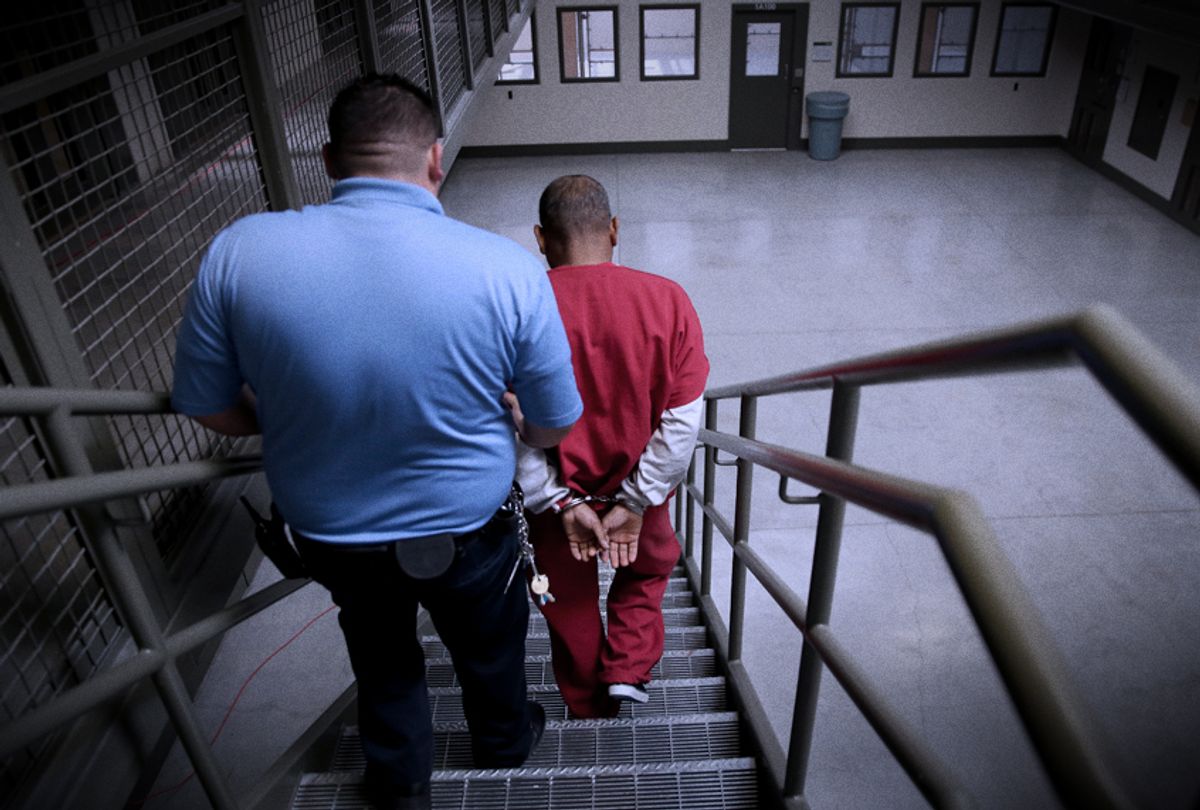The U.S. Supreme Court recently ruled that detained immigrants, even those with lawful permanent resident status and asylum seekers, do not have the right to periodic bond hearings under statutory grounds. Justice Stephen Breyer wrote, in a scathing dissent, that this was probably “the first time ever” that the court was holding that a federal law allowed long-term confinement of people on American soil with no opportunity for bond. Though the court sent the case back to lower courts to look further into the issue from a constitutional perspective, the ruling was shocking -- especially in light of its potential impact.
Many immigrants are held in detention for long periods of time -- on average, 13 months. This ruling is likely to lead to even greater overcrowding at detention centers, as well as the deterioration of medical and psychological care and other inhumane conditions at these facilities.
I wish the justices had visited with detained immigrants at one of the more than 200 immigration detention centers nationwide -- such as the notorious Stewart Detention Center, a private prison in Georgia operated by Corrections Corporation of America under an ICE contract -- to fully understand the implications of dooming immigrants to potentially indefinite imprisonment.
As Project South and the Penn State Law Center for Immigrants’ Rights Clinic found in a year-long investigation last year, Stewart is rife with human rights violations, including denial of adequate medical care, an exploitative labor program and inedible or inadequate food. If those in detention complain about the conditions, the facility is swift to place them in retaliatory solitary confinement. In cases where immigrants, having exhausted every other avenue of possible redress, put their bodies on the line and resort to hunger strikes, the government has sought court orders to force-feed them.
The tragic deaths at Stewart speak for themselves. Nine years ago, a 39-year-old immigrant, Roberto Medina-Martinez, died of a treatable heart infection. Records obtained from the government showed that the sole physician at the facility did not review Medina-Martinez’s health records and also that this doctor systematically failed to do so for the entire prison population, thereby endangering the health of thousands of people.
In other words, Medina-Martinez died because of government neglect.
The tragedy did not stop there. You might have thought the government would have stepped up the quality of the health care at the facility after that death, but the exact opposite happened. After that physician left, Stewart was left without a physician for more than three years. This is all the more egregious in light of the fact that Stewart was, at the time, the largest facility in the country, with more than 1,750 detained individuals. (It reportedly still has the largest population, although at least one other facility has more capacity.)
More deaths ensued. On May 17, 2017, Jean-Carlos Jimenez-Joseph, a 27-year-old immigrant, committed suicide at Stewart after being held in solitary for 19 days. This was a preventable tragedy. The horrendous impact of solitary confinement on the mental health of imprisoned individuals, even after their release, has long been documented.
At Stewart, solitary has been used as the first resort for responding to mental and emotional difficulties experienced by individuals who have often fled persecution and torture in their home countries and are already in a fragile emotional state. The Department of Homeland Security Office of Inspector General also found, in a report issued in December 2017, that solitary had been used at Stewart as punishment for minor infractions. In Jimenez-Joseph's case, investigations have shown that the facility did not provide him with the adequate dose of medication that he needed, which he had requested at least twice.
Another man detained at Stewart, 33-year-old Yulio Castro Garrido, died on Jan. 30, 2018 of pneumonia. ICE continued its shameful practice of including his alleged offense in the agency's press release regarding his death, as if what Castro Garrido had or had not done previously was in some way relevant to his death in a government facility.
In its original press statement, ICE actually sought to blame Castro Garrido for his own death, claiming that he had refused medical treatment. In other circumstances, blaming the dead man might have worked. But not this time. After intense media and public attention, ICE was forced to change its press statement and retract the falsehood, saying instead that Castro Garrido had not responded well to medical care.
His brother, Frank Suarez, told the Atlanta Journal-Constitution: “It is just so unfair that he went there in full health, full of dreams, full of everything that an immigrant has to be better in this country and he just came out as a dead body.”
The same could be said of all 179 immigrants who have died in ICE’s detention centers since 2003 while awaiting deportation.
With President Trump’s deportation and detention machine now ramping up after Congress rubber-stamped a budget of nearly $7.1 billion for ICE -- an increase of $641 million from the previous fiscal year -- the tragedies are sure to continue.
To top that, the Department of Justice recently rolled out a quota system for immigration judges, basing its evaluations of such judges on how quickly they complete cases. In effect, this wipes out the independence of immigration judges and ensures further erosion of due process for detained immigrants. The DOJ has also suspended the Legal Orientation Program for detained immigrants, one of the only avenues for legal information available to them.
If Congress were exercising its constitutional oversight function, it would put the brakes on this travesty and hold the administration accountable instead of rewarding an abusive system with ever more funds.
In a November 2017 letter to the Georgia congressional delegation, 70 Georgia and national organizations requested an investigation of Stewart and another deplorable Georgia facility, the Irwin County Detention Center. We have yet to receive an adequate response.

Shares